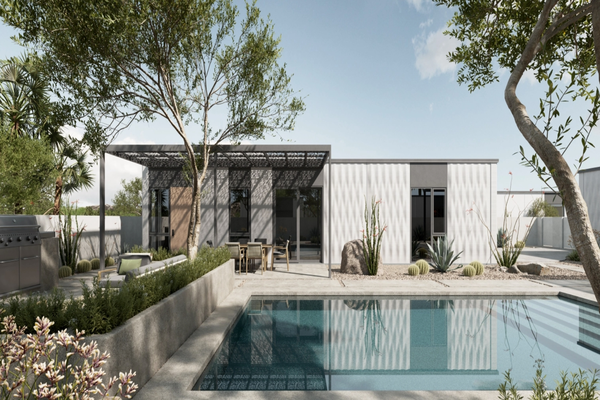In a world driven by rapid technological advancements, the construction sector, a realm traditionally characterized by bricks and concrete, is experiencing a revolution. This upheaval is led by the emergence of 3D printing house technology. Offering affordability, speed, and adaptability, 3D printed homes are now at the forefront of architectural innovation.
The Charm of 3D Printed Homes
If you happen to find a construction site that is 3D printing a house, you will soon realize that it is absolutely not the traditional construction site that you would imagine and you will most likely be amazed by what you are looking at. No bricks, no dust, just a big 3D printer printing walls with concrete layer by layer.The concept of 3D printed homes is no longer the stuff of science fiction. Today, a rising demand for sustainable, budget-friendly, and efficient housing solutions has caused a surge in the popularity of 3D printing. This technology has progressed from crafting miniature prototypes to erecting full-sized, livable structures.
Technology Advancements: Delving Into the 3D Printed Concrete House
Traditional construction techniques require days, if not weeks, of laying down bricks and curing cement. But the 3D printed concrete house is flipping this narrative. By deploying a unique blend of concrete, these houses are erected layer by layer with precision. The consistency this concrete and the power of 3D printing ensures homes that are not just sturdy, but also encompass complex designs and geometries, often unfeasible with conventional methods.
Historical Markers: A Look at the First 3D Printed House
In April 2021, the first 3D printed house was established. It was not just a construction project; it was a statement to the world about the transformative potential of 3D printing in homebuilding. By significantly reducing labor hours and material waste, this pioneering venture served as a prototype, emphasizing the efficiency and viability of 3D printing in mainstream construction.
Compact and Sustainable: The Rise of 3D Printed Tiny Homes
We also see a trend of advocating for downsized living and sustainability, finds a natural ally in 3D printing. These 3D printed tiny homes are not only budget-friendly but also intricately designed. Leveraging 3D printing, designers can maximize utility in compact spaces, ensuring that every square inch serves a purpose. For those inclined towards minimalism, such homes offer a sustainable living solution without compromising on modern comforts.
Beyond Residences: The Scope of 3D Printed Buildings
The impact of 3D printing in construction isn’t limited to homes. This technology is shaping the future of commercial and industrial structures. Imagine multi-story office complexes, warehouses, or even community centers, all brought to life through 3D printing. The prospect of constructing large-scale 3D printed buildings within shorter timeframes, with reduced costs and environmental impact, paints a promising picture for the future of urban development.
Challenges and Prospects
However, like all emerging technologies, 3D printed construction faces its set of challenges. Questions arise about the longevity of such structures, adherence to global construction standards, and the scalability of these projects. Yet, with continued research and collaboration between tech innovators and construction experts, many of these challenges are gradually being addressed.
As materials technology advances, we can expect even more durable and eco-friendly options for 3D printed homes. Furthermore, as the technology becomes more mainstream, regulatory bodies worldwide are likely to develop standardized guidelines to ensure the safety and durability of 3D printed constructions.
In Conclusion
The marriage between 3D printing and construction signifies a paradigm shift in how we perceive architecture and homebuilding. From the remarkable first 3D printed house to the potential of sprawling 3D printed buildings, this technology is setting the stage for a future where customizable, affordable, and sustainable living spaces are accessible to all.
As we embrace this new era of construction, it's evident that 3D printing will play a pivotal role in shaping our habitats, communities, and skylines. The narrative of construction is being
Check out Our Special Offers
Featuring Process
- Coming Soon
Featuring Materials
- Coming Soon






















